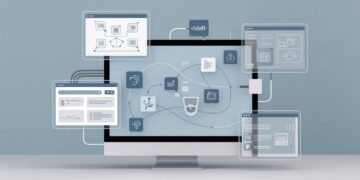Are you looking to enhance your employee onboarding process? Do you want to ensure a seamless transition for new hires into your company culture? In this article, we will dive into the best practices for seamless employee onboarding, from the initial orientation to integration into the company culture. By following these guidelines, you can create a comprehensive onboarding program that fosters engagement, productivity, and long-term retention. Let’s explore the key aspects of successful employee onboarding.
1. The Importance of a Well-Structured Onboarding Program
Effective onboarding plays a crucial role in shaping the employee experience right from day one. A well-structured onboarding program sets the tone for the new employee’s journey, helping them understand their role, responsibilities, and the company’s values. It also ensures a smooth transition by providing the necessary resources and information. By investing in a comprehensive onboarding process, you can set your new hires up for success and accelerate their integration into the organization.
2. Orientation: Creating a Strong Foundation
The initial orientation phase is vital in familiarizing new employees with the organization’s mission, vision, and values. During this stage, new hires should receive a warm welcome, introductions to key team members, and a clear overview of the company’s goals and objectives. Additionally, providing an office tour and sharing information about company policies, benefits, and expectations can help employees feel more at ease and connected to the organization.
3. Integration into the Company Culture
A crucial aspect of successful onboarding is ensuring new hires feel integrated into the company culture. This involves fostering relationships, promoting open communication, and encouraging active participation. Pairing new employees with mentors or buddies who can provide guidance and support throughout the onboarding process can significantly contribute to their sense of belonging and engagement. By incorporating team-building activities, social events, and collaborative projects, you can create opportunities for new hires to connect with their colleagues and establish relationships within the organization.
4. Effective Communication: Key to Onboarding Success
Communication is a cornerstone of successful onboarding. Clear and consistent communication between new employees, their managers, and the broader team helps align expectations, provide feedback, and address any concerns. Regular check-ins, one-on-one meetings, and team meetings should be scheduled to encourage open dialogue and create a supportive environment. By fostering effective communication channels, you can ensure that new hires have the necessary guidance and resources to thrive in their new roles.
5. The Power of Mentorship and Feedback
Mentorship and feedback play vital roles in the onboarding process. Assigning mentors who can provide guidance, answer questions, and offer support can significantly impact the new employee’s integration and development. Encouraging continuous feedback from both mentors and managers helps identify areas of improvement and provides opportunities for growth. Constructive feedback enables new hires to understand their strengths and weaknesses, align their goals, and navigate their career path within the organization.
6. Leveraging Technology for Streamlined Onboarding
In the digital age, technology plays a pivotal role in enhancing the onboarding experience. By leveraging onboarding software, intranet platforms, and other technological tools, you can streamline administrative tasks, automate processes, and provide easy access to essential resources. Online training modules, interactive orientation materials, and virtual onboarding sessions can also be incorporated to facilitate self-paced learning and ensure consistency across the onboarding process.
7. Showcasing Successful Onboarding Strategies: Case Studies
To gain insights into successful onboarding strategies, let’s explore a few case studies. Company A implemented a buddy system where new hires were paired with experienced employees, fostering mentorship and knowledge sharing. This approach significantly reduced the learning curve and increased new hire retention. Company B implemented an immersive onboarding experience that included team-building activities, interactive workshops, and cross-functional projects. This approach helped new employees establish strong relationships, understand the organization’s dynamics, and accelerate their integration into the company culture.
8. Emerging Trends in Employee Onboarding
To stay ahead in the ever-evolving landscape of employee onboarding, it’s essential to stay updated on emerging trends and innovative approaches. Some notable trends include personalized onboarding experiences tailored to individual needs, gamified onboarding platforms to increase engagement, and virtual reality-based simulations for immersive learning. By embracing these trends and incorporating them into your onboarding program, you can create a dynamic and engaging experience for new hires.
Conclusion
Seamless employee onboarding is a critical component of building a strong workforce and fostering long-term employee retention. By following the best practices outlined in this article, you can create a comprehensive onboarding program that sets new hires up for success and integrates them seamlessly into your company culture. Remember, effective communication, mentorship, and feedback are key to building strong relationships and ensuring a positive onboarding experience. Embrace technology, stay updated on emerging trends, and continuously refine your onboarding process to adapt to your organization’s and employees’ changing needs. If you want to learn more then visit OnboardingFAQ.com.
Also Read Interesting Articles At: Tech New Master.


















